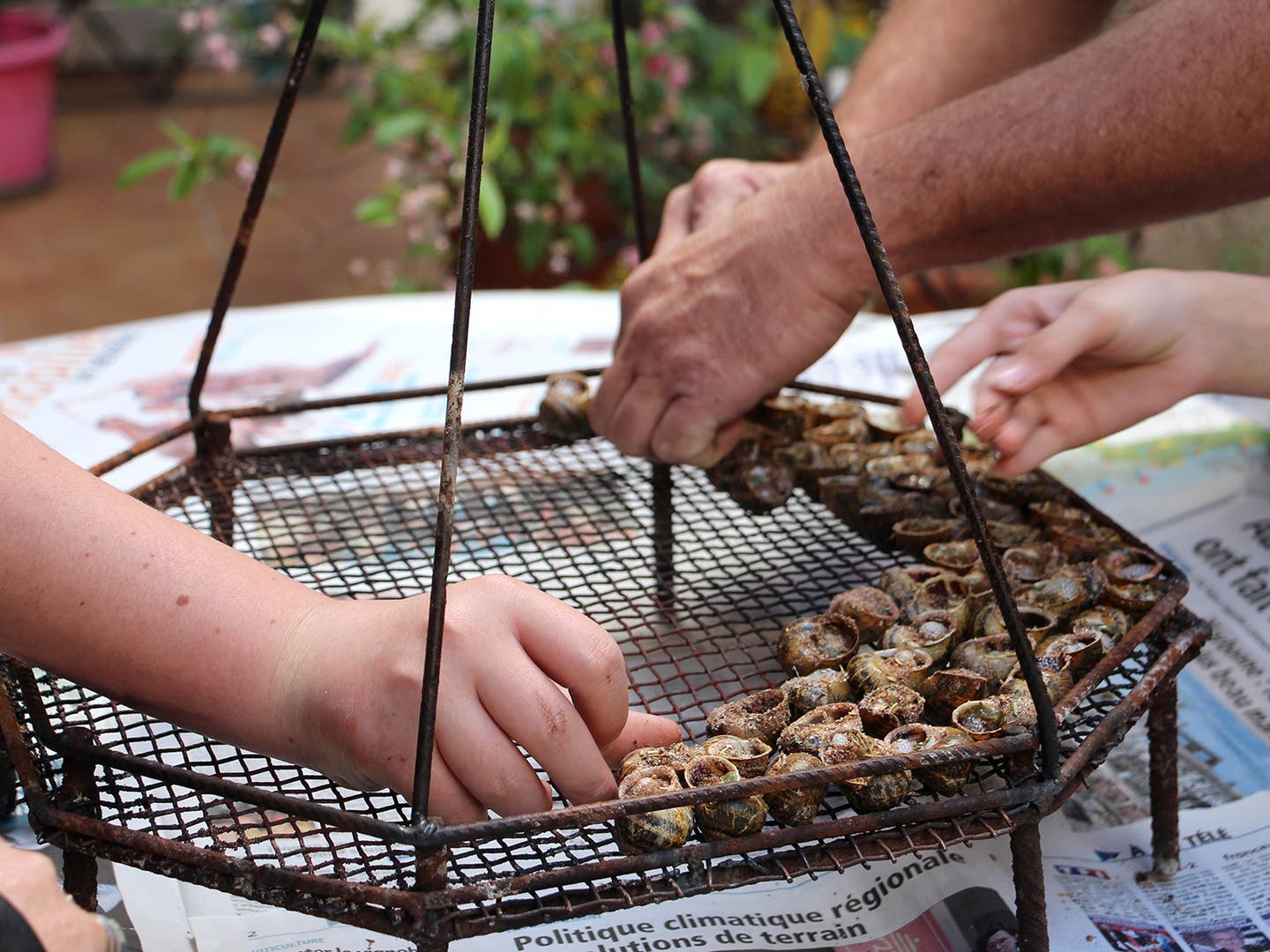
Preserving Southern France’s Flame-Grilled Snail Tradition
Doused in sizzling lard, cargolade is a harbinger of spring in Occitanie
Most people who have dined in a French restaurant have come face-to-face with escargots de Bourgogne, a classic dish of plump snails broiled with parsley and garlic butter, typically extracted from their shells with the help of a unique tool that will look familiar to anyone who’s ever used an eyelash curler. But while these escargot are à la mode in Burgundy, another snail tradition endures in the south, near Spain.
Cargolade is a northern Catalan specialty popular in Occitanie, the southernmost region of France along the Spanish border. Its name is derived from the French word for "snail," but with the addition of the suffix -ade, which regionally denotes a meal based around a single ingredient—as in escalivade, a dish of charred, roasted vegetables, or bullinade, a fish soup made from the catch of the day. A proper cargolade is made with the local variety of petit gris snails cooked outdoors over sarments de vigne, or vine wood, and is a harbinger of pleasant springtime weather. A ritual feast of sorts, the first cargolades of the season traditionally take place on Easter Monday, and a July festival in the village of Bompas celebrates the snails at their peak, serving over 160,000 to locals and visitors alike.
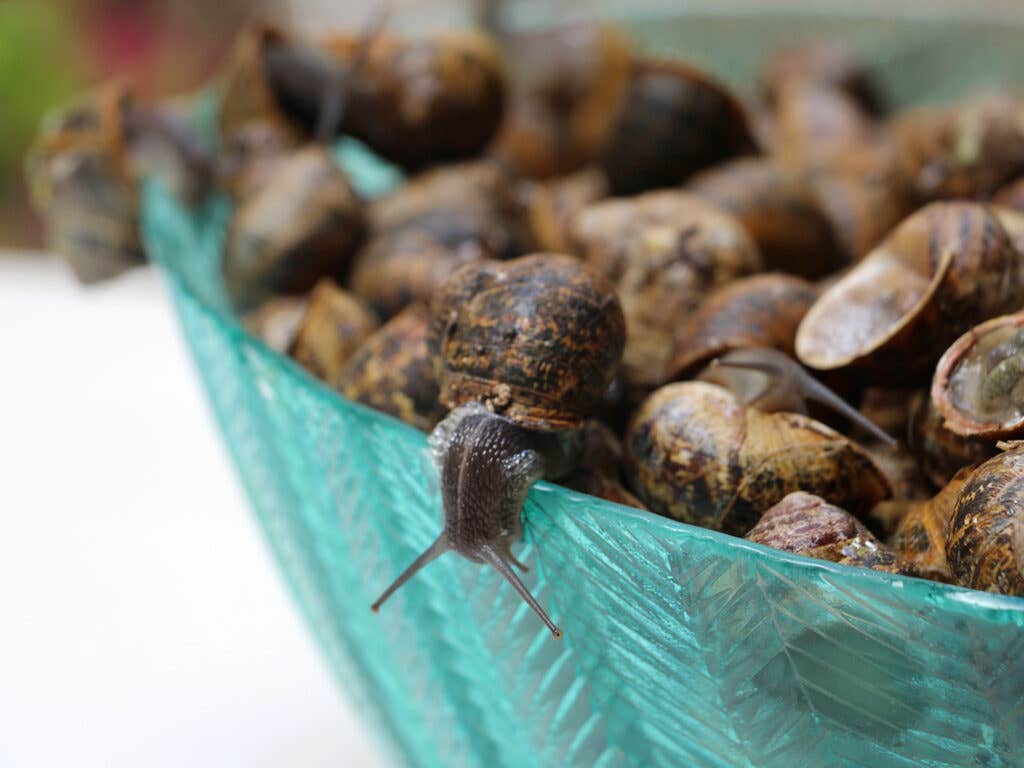
Two slightly different versions of the dish exist: The first, and most traditional, has been served the same way for 28 years at Le Petit Gris, a restaurant (named for the snail) in Tautavel, in the Spain-adjacent department of Pyrénées-Orientales. Here, around 1,000 snails a week are stuffed with a mixture of chopped lard, parsley, and garlic before being seasoned with salt and paprika. The live snails are then arranged over a wire grill and cooked over an open flame.
"Some people say that as soon as they start to whistle, they're cooked," says grill master Romain, watching carefully as they bubble and create a liquid known colloquially, if unpleasantly, as "drool." But for Romain, the whistle is just the beginning, not the end, of the cooking process. "Some people like them with more drool," he says, which dries out as they continue cooking. "Others like them better done." I get a medium-rare cuisson on mine, which he sets at a table along with a ramekin of the traditional accompaniment, aïoli. The snails are delicious, with a crispy salt crust and a tender, well-seasoned interior.
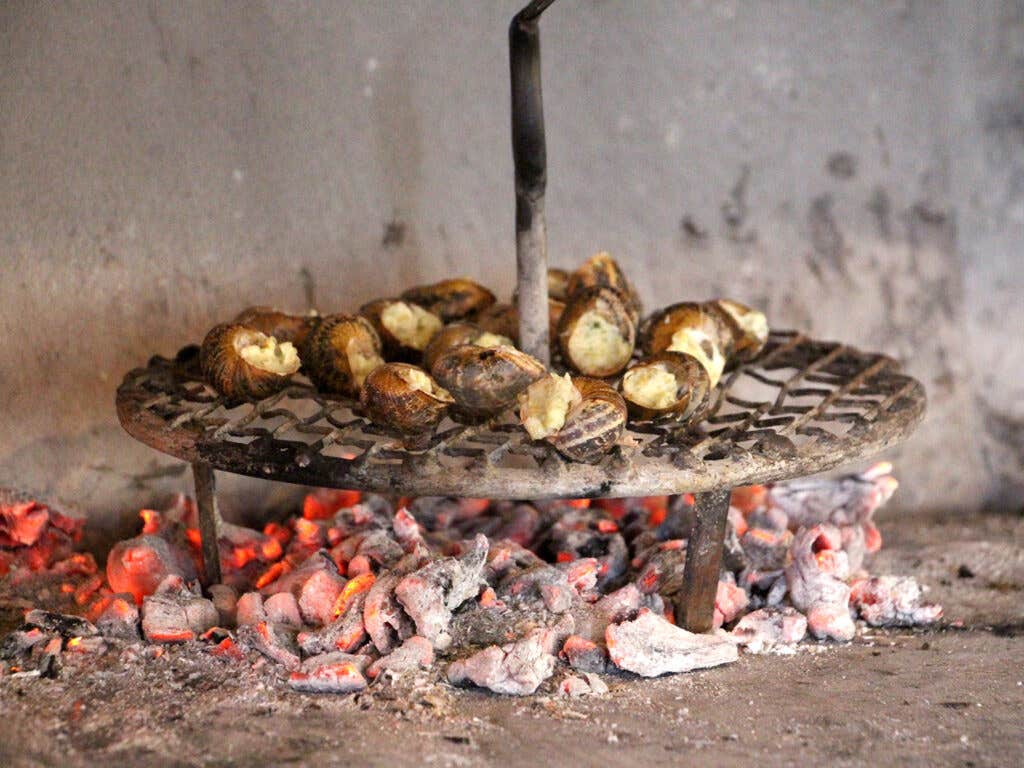
Given the winding roads I’ve had to navigate coming from Perpignan—and which will only lead me further into the mountains—the responsible accompanying beverage would be a glass of water. But a fellow customer, speaking with the local lilting southern accent, is affronted by my request. “One must not drink water with snails,” he says. “It’s bad for the stomach.”
I'm breaking another rule, too, I find, at Le Petit Gris: eating sitting down. Traditionally, a cargolade is a convivial experience enjoyed outdoors. Snails are snatched from the grill and eaten piping hot—one of only two things, along with the quignon, the crusty heel of the baguette, that the French may ever choose to eat while standing. The snails themselves, 100 or so per person, are usually the precursor to grilled sausages and meats, all to be accompanied by chilled local rosé.
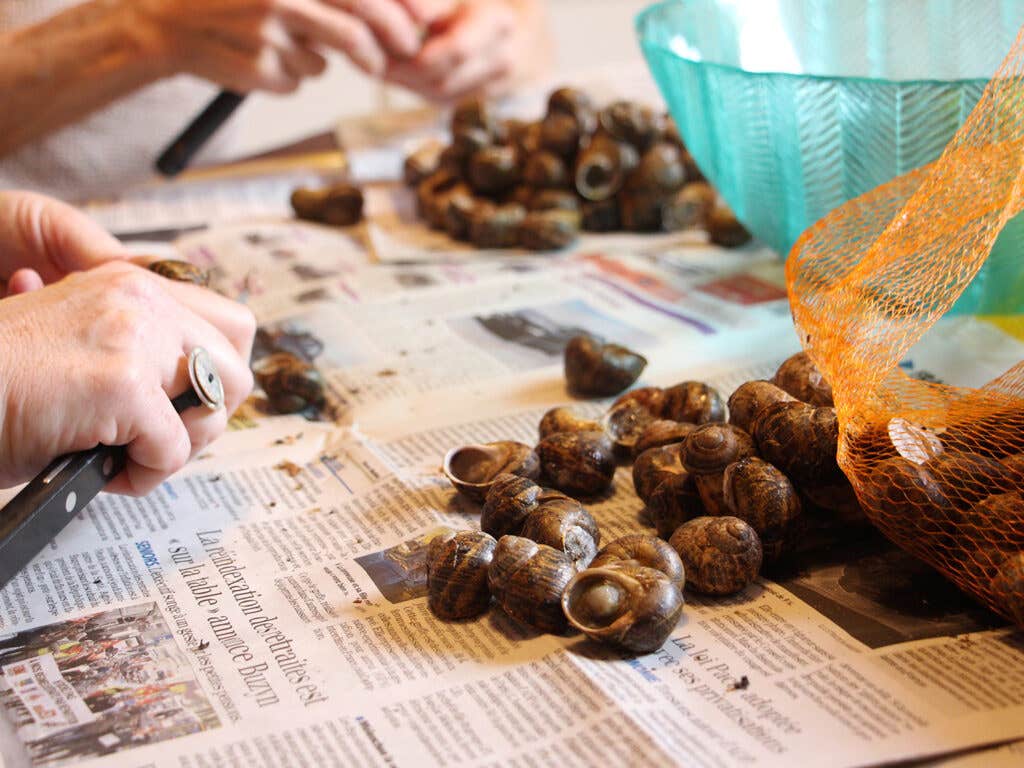
For the second method, I had to travel to a neighboring village in the Aude, another department of the Occitanie, just north of Pyrénées-Orientales. Here, the snails, in a preparation only the French could dream up, are flambéed with sizzling rendered lard. Our host, Christophe Pla, a local winemaker at the Cave Coopérative de Tuchan, jokingly claims that this is the gavach method, borrowing the Catalan pejorative for a non-Catalan.
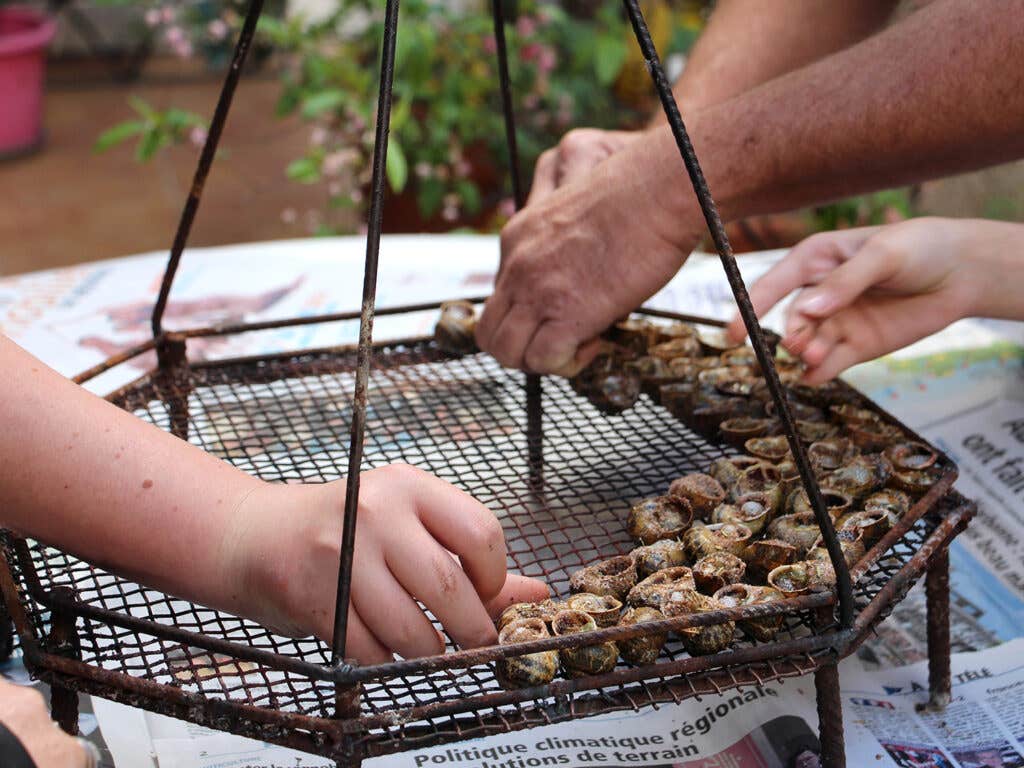
To prepare this family-style cargolade, everyone lends a hand, from grandma to her 10-year-old granddaughter. The snails are scraped clean before being dipped headfirst into a mixture of salt, herbs, and piment d'Espelette, and arranged on the special cargolade grill, a family heirloom. Slices of lard are tucked into a special device—a flamboir, or flambadou in local dialect—and ignited. The flaming fat is drizzled over the bed of snails before the entire grill moves to a heap of smoldering vine-wood coals, where the snails are cooked until sizzling and enjoyed with slices of bread spread thick with homemade aïoli.
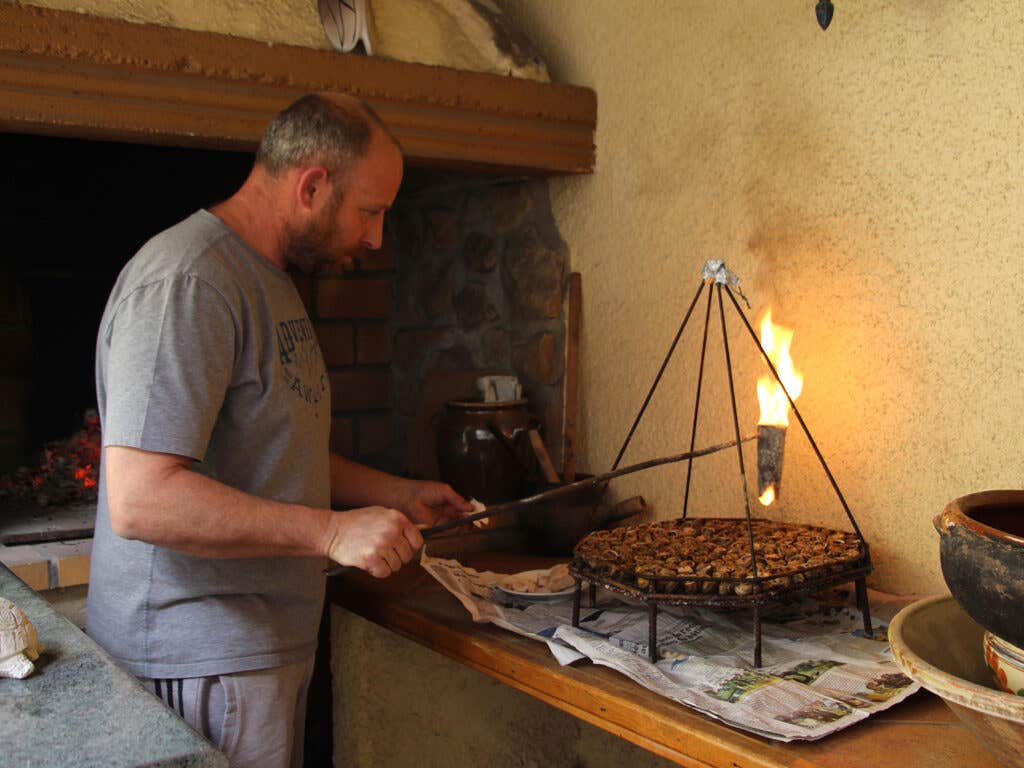
Snails may have a reputation of being slow, but in a cargolade, they wait for no one. As we dig into the hot snails, richly yet simply flavored with fatty lard and accompanied by Christophe’s own rosé, we also address the more difficult questions—namely why, despite a time-honored tradition of foraging for wild snails, we had to buy ours from a purveyor.
"After a rainstorm, we used to go out and gather them," recalls Stéphanie Pla, Christophe's sister. Their mother, Régine, notes that a certain expertise is required, as well as a period of "fasting" in which the wild snails are purged of any unpleasant viscera, a process similar to purging clams of grit and sand. Snails found in oleander bushes, Régine says, can make a diner quite ill; those found among local genêt flowers, meanwhile, are very bitter, unless made to fast even longer than the recommended 15 days. "We feed them flour and thyme and rosemary," explains Christophe of the fast. After two to three weeks, they're clean and ready to eat.
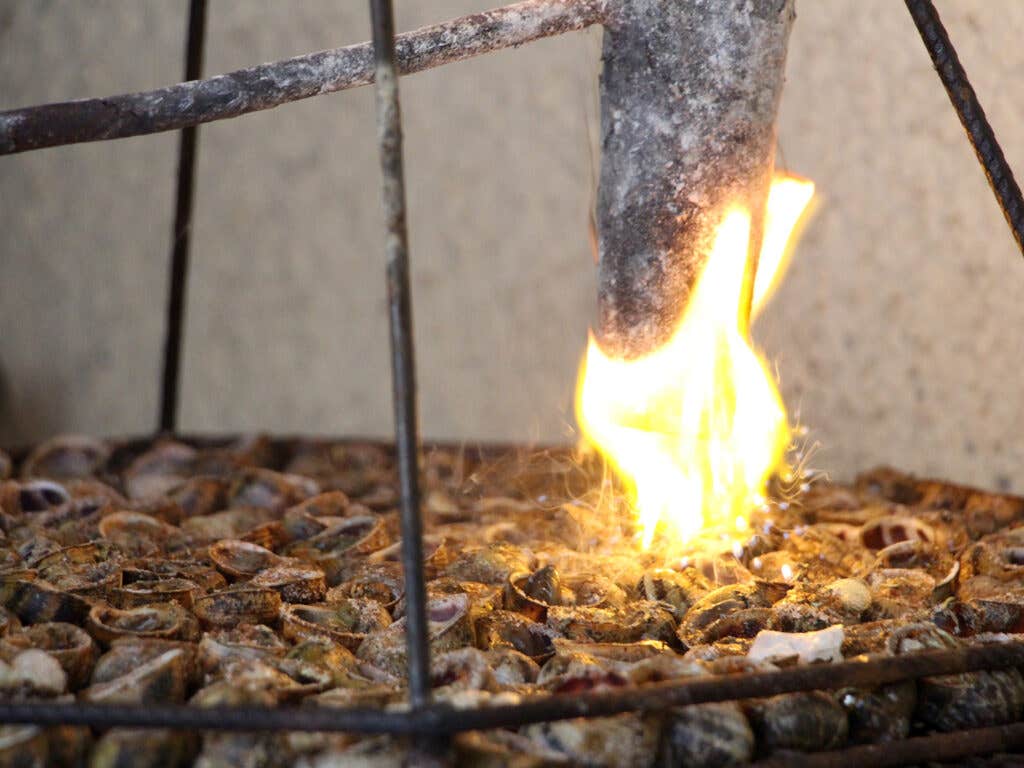
Today, it would be impossible to assemble the 500-odd escargots that fed our small party by finding them in the local fields, but the reasons behind the change are hotly debated. Some say the dearth of wild snails is due to the ever-increasing use of pesticides and insecticides in the region; others claim the local population has been picked over—not just by overzealous harvesters, but by wild sangliers. "A wild boar will eat anything," says Christophe. "It'll find a snail, even if it's buried; it'll dig it up and eat it. And the boar population here has exploded."
This is a problem plaguing not just Occitanie, but the country as a whole. France now boasts more than 2 million boars, according to French newspaper Le Figaro, four times as many as are hunted each year, and more than France has ever seen before. The side effects of this population surge, according to the outlet, account for more than 60 percent of the 40,000 road accidents involving wild animals every year, and as much as €50 million in annual agricultural losses. The rise in the number of wild boars is due to a myriad of factors, including increased cultivation of crops they love—like corn—and diminishing popularity of the once-common hobby of game hunting.
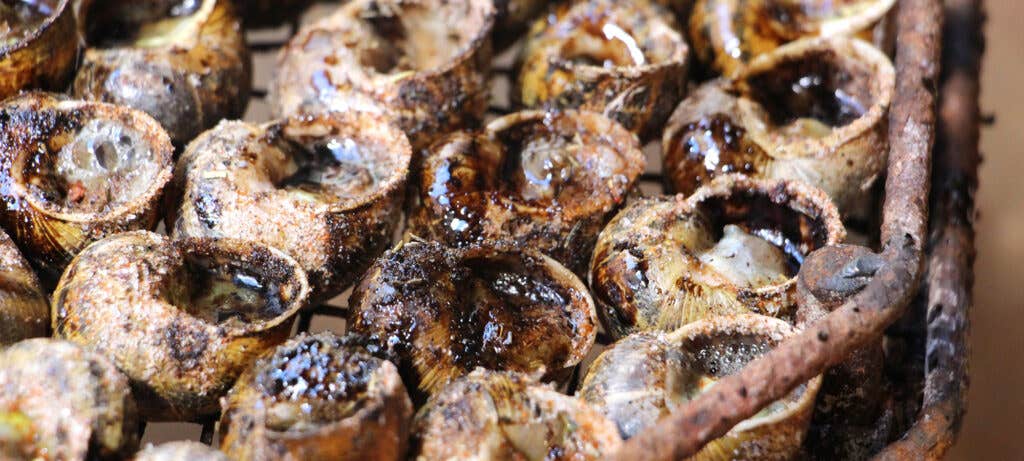
Climate change has taken its toll, too. Warmer springs have increased the fertility of female boars, and as a result, boar populations are growing between 60 and 200 percent every year. Milder winters also mean that populations are not being culled by the chill, according to AgriSur. The warmer weather affects the snails directly as well. Petit gris are nocturnal animals that thrive in cool, damp spaces, and many of the ones that manage to avoid being devoured by wild boars end up literally cooked in their shells in the dry summer heat.
All of these factors combined might have pointed to the end of southern France’s illustrious cargolade tradition, but some locals have come to the rescue, like Lorenzo Sanchez, a former restaurateur turned artisanal snail farmer. In a country where foraging is so commonplace that pharmacists will examine your wild mushroom harvest to weed out any poisonous specimens, it isn’t easy to convince locals to buy what they have long been scavenging for free. But that’s exactly what Lorenzo did when he started farming snails in the small town of Saint-Féliu-D'Avall, in Pyrénées-Orientales.
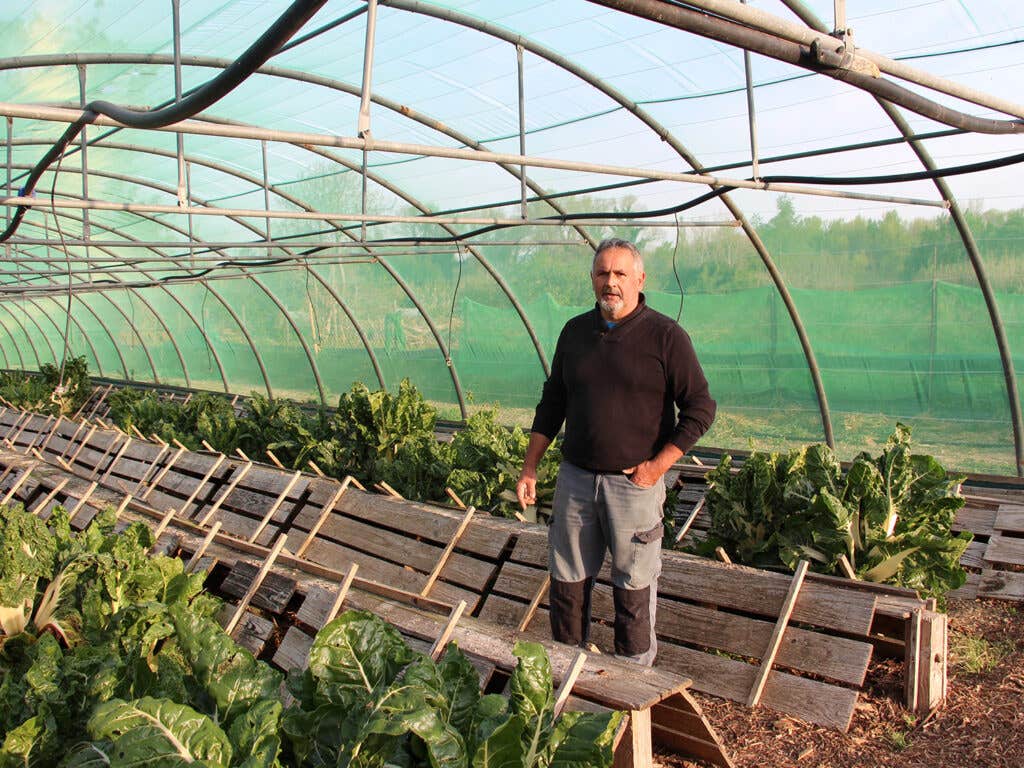
When I visit, Lorenzo is gathering a few rogue snails, returning them to his covered snail park planted with Swiss chard—not for food, but to afford his snails the shade they so crave. He explains the slow-but-sure change in local attitude. "I had clients who would come buy a hundred or two because they hadn't found enough themselves," he says. "And you could see that pissed them off, that bugged them."
Nine years later, during the first days of the spring thaw, Lorenzo's phone doesn't stop ringing: Locals are desperately placing orders for their weekend cookouts. The arrival of people like Lorenzo on the marketplace may well prevent the petit gris from succumbing to the same fate as that of the Burgundy escargot: While the dish is still omnipresent nationwide, after years of overharvesting and destruction of natural habitats, all of France's most famous snails are imported from Central Europe, Romain Chapron, director of Croque Bourgogne, tells NPR.
But while experts note that the Burgundy snail is impossible to farm, the petit gris take quite well to it, and that might be their salvation. They grow so well in captivity that Lorenzo can produce snails at full maturity—which can take two years in the wild—in as little as three months. “It’s a passion,” says Lorenzo of his work. “Of course, it’s a business. Like anyone, I work to make money. But it’s a passion, above all.”
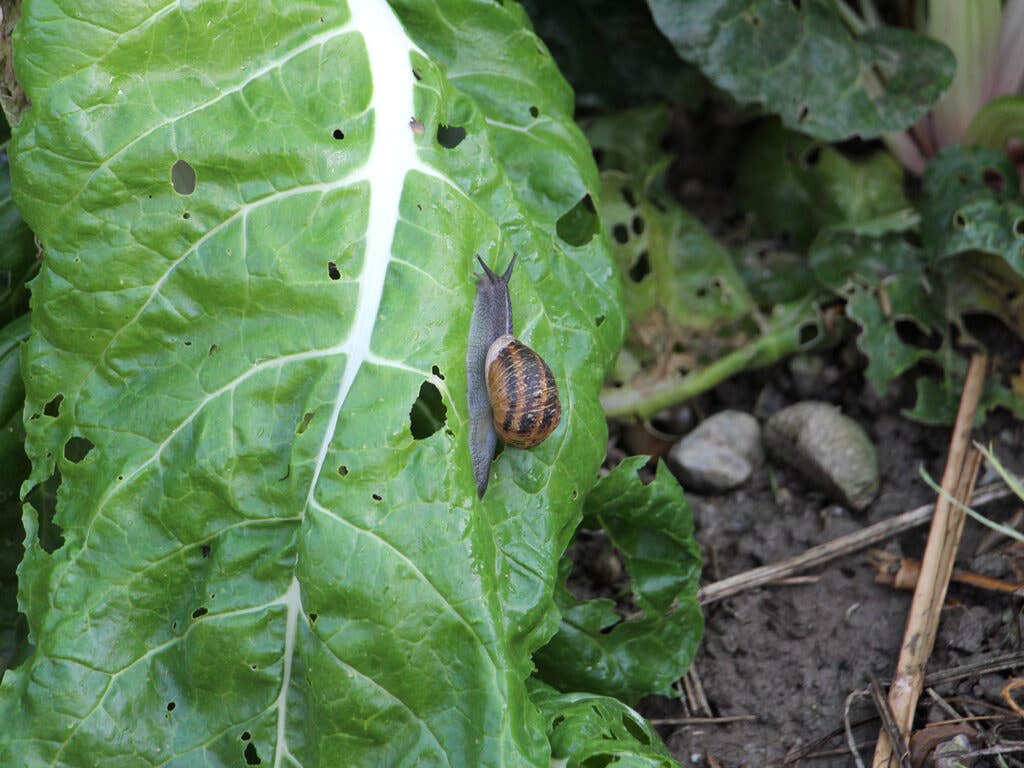
The same could be said for Cathy Joly, a short drive away in Toulouges, who became a professional snail farmer seven years ago. “It started as a joke,” she says. “One night, I came home from work, a bit aggravated, and I said to my husband, ‘You know what? I’d rather go up to the mountaintop and raise goats.’” Snails seemed like a good compromise. While Cathy attended some formal classes to learn the ropes, snail farmers are so few and far between that, for the most part, she had to teach herself. Those first few years, she recalls, she ended up with “more dead than alive.” But now things are working in her favor. “Now, everyone who was laughing before is saying, ‘Hey, that’s pretty cool!’”
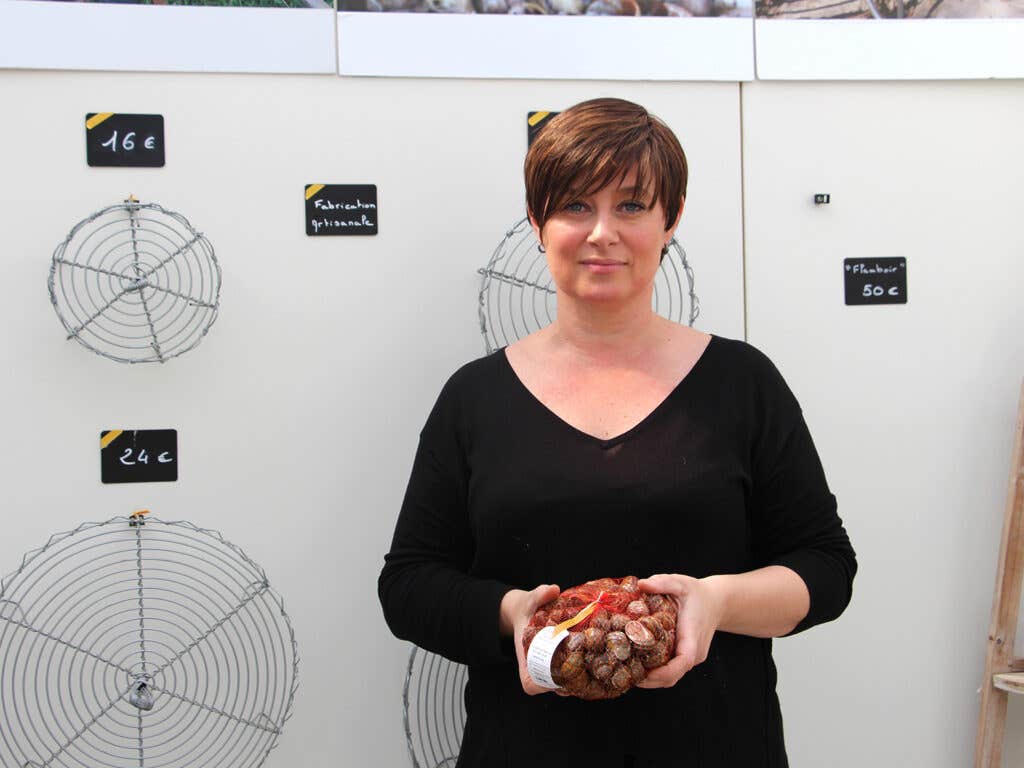
Today, Cathy lays claim to an all-natural product over which she exerts full control. While she bought baby snails from a French producer when she first started out, she now culls the larger snails from each harvest and uses them as reproducers, packaging the others for sale in net bags of 100, along with a sprig of thyme and a red-and-yellow ribbon: the colors of Catalonia. “Sometimes I get people who find snails in the wild bringing them to me to add them to the parks,” she says. “I tell them no. It’s kind; it comes from a good place, but no.” Taking such measures helps ensure a safer product. After all, hardy snails, occasionally used to ascertain pollution levels in the environment, can be toxic or even deadly if they stumble across the wrong contaminants in the wild, something that no amount of fasting will fix.
Not only is Cathy producing top-quality snails, but she’s also trying to encourage the revival of the cargolade culture, which she says is falling by the wayside in families where the younger generation hasn’t taken the initiative to glean tips and techniques from the older. Cathy hopes to launch cargolade classes soon; in the meantime, she shares her own insight with customers and sells all the tools they need, including locally handmade wire cargolade grills and even special blacksmith’s nails—a nod to the makeshift escargot forks of old. A true cargolade, cooked over local vine wood and eaten amidst the rugged topography of the garrigue, encourages people to remember where they come from. It is this conviviality, this tradition, that is so essential to preserve. “It’s really about tradition,” Cathy says. “Meeting up with friends or family, everyone lending a hand.”
Keep Reading
Continue to Next Story










